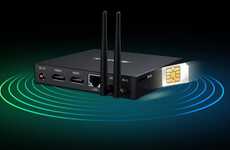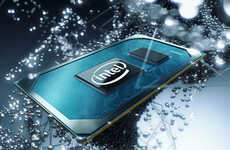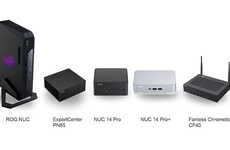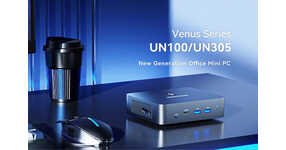
Intel has officially launched a new platform which has been circling around the web for a while. The UMPC platform, also known as “McCaslinâ€, features two new Intel processors, the A100 and A110, and a chipset in which the total space occupied by these components is spectacularly reduced.
The A100 and A110 processor are based on the Dothan 90nm process which is the previous generation Pentium M processors clocked at 600 MHz and 800 Mhz. Pentium M technology is a lot faster than the Celeron Ms used by current UMPCs.
Designs for the future UMPCs are expected to match the form factor of PDAs and SmartPhones like the OQO model 02 and the Sony VAIO VGN-UX180P which already set the standards for miniature handhelds. Intel is also promising better power saving capabilities as they target a 4-5 hours of battery life.
The A100 and A110 processor are based on the Dothan 90nm process which is the previous generation Pentium M processors clocked at 600 MHz and 800 Mhz. Pentium M technology is a lot faster than the Celeron Ms used by current UMPCs.
Designs for the future UMPCs are expected to match the form factor of PDAs and SmartPhones like the OQO model 02 and the Sony VAIO VGN-UX180P which already set the standards for miniature handhelds. Intel is also promising better power saving capabilities as they target a 4-5 hours of battery life.
Trend Themes
1. Miniature Handhelds - The rise of miniature handheld devices like PDAs and SmartPhones is creating opportunities for disruptive innovation in the UMPC space.
2. Faster Processing - The introduction of Intel's A100 and A110 processors based on Pentium M technology presents opportunities for disruptive innovation in the UMPC industry by offering faster processing speeds.
3. Improved Battery Life - With Intel targeting 4-5 hours of battery life for UMPCs, there are opportunities for disruptive innovation in the development of more efficient power-saving capabilities.
Industry Implications
1. Mobile Technology - The growth of compact mobile devices like UMPCs presents opportunities for disruptive innovation in the mobile technology industry.
2. Semiconductor - The launch of Intel's new UMPC platform with reduced component size opens up opportunities for disruptive innovation in the semiconductor industry.
3. Consumer Electronics - The trend towards miniature handheld devices and improved battery life in UMPCs creates opportunities for disruptive innovation in the consumer electronics industry.
3
Score
Popularity
Activity
Freshness























